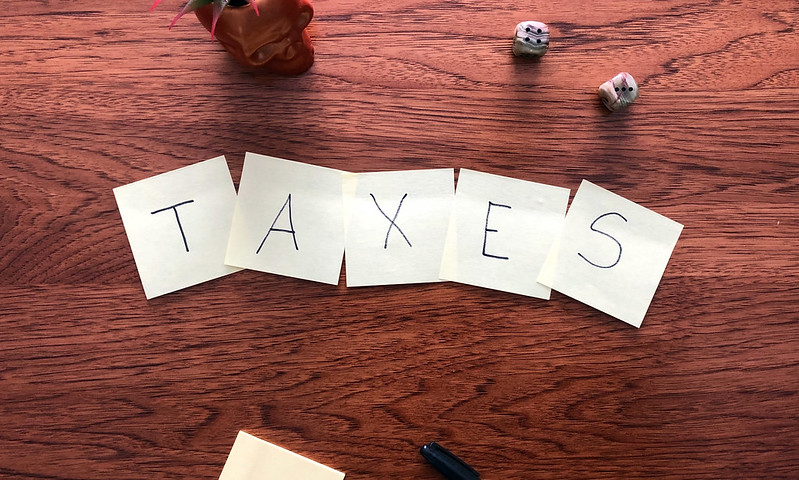The World Inequality Report 2022, drafted by French economist Thomas Piketty and his colleague, once again highlights high and growing inequality across countries. It calls for draconian taxes on the super-rich to help the poor and middle class.
The authors have long shouted themselves hoarse, warning of apocalypse if inequality keeps rising. But far from turning revolutionary, voters in highly unequal democracies keep electing tax-cutters such as Donald Trump, Emmanuel Macron and Narendra Modi. Left intellectuals are seriously divorced from the public mood.
Voters are happy to vote for politicians like Joe Biden who propose higher taxes to fund better childcare, health, college education and infrastructure. But these are modest tax measures. They will not reverse rising inequality, which is fuelled above all by fiscal and monetary stimuli to accelerate economic growth.
Politicians of all stripes like stimuli because voters do too. But while stimuli raise employment and wages, they increase property and stock market wealth even more. Piketty and Co ignore the extent to which the interests of the poor and rich converge. The rich gain most in booms and lose most in recessions, yet voters prefer booms. Left intellectuals have failed to convince voters of any clear link between soaking the rich and enriching the masses.
If rising inequality is really terrible, most people should be unhappy. Yet the UN World Happiness Report says the global average of those very happy or rather happy was an encouraging 64% in 2019, and 63% even in the dreadful Covid year of 2020. This represented a significant fall from 77% in 2011. But high inequality co-existed with high happiness through the decade.
Between 2011 and 2019, happiness on this measure declined from 85% to 79% in the US, from 80% to 75% in Sweden, and from 89% to 77% in India. But it rose from 79% to 82% in the UK and from 76% to 78% in Germany. The overall picture remains highly positive. Remarkably, Trump’s USA in 2019 had a better happiness ratio than socialist Sweden, widely praised for high tax rates to finance welfare.
Piketty and Co focus mainly on income tax data, which can be very misleading. Nothing is more precious than life. Life expectancy has risen sharply and the gap between rich and poor has narrowed dramatically. The same is true of education.
Phil Gramm and John Early say in The Wall Street Journal that the US Census Bureau estimates that between 1967 and 2017, income equality in the US spiked up by 21.4%. But these figures failed to adjust for huge government transfers to the masses or taxes paid by the rich. Make those adjustments and the rise in inequality becomes just 2.3%. No apocalypse here.
There is more to living standards than taxable income. ‘Ten Global Trends Every Smart Person Should Know’ by Bailey and Tupy shows fantastic progress on several fronts. World GDP growth accelerated tenfold from 0.3% per year before 1820 to 3% after 1900. Extreme poverty exceeded 80% for most of history, but fell to 55% by 1955 and just 8.6 % in 2018. Famines killed hundreds of millions through history but have almost disappeared. Inequality between individuals may have increased but inequality between nations has fallen for the first time since the industrial revolution with developing countries (including China and India) catching up. The proportion of full-fledged democracies as defined by the Centre for Systemic Peace rose from 31% in 1989 to 49% in 2017, while full-fledged autocracies declined from 39% to to 11%. The list goes on and on.
Psychologist Steven Pinker’s books ‘The Better Angels of Our Nature’ and ‘Enlightenment Now’ reveal other astonishingly positive trends. Violence, including homicide, cruel punishments, child abuse, animal cruelty, domestic violence, lynching, pogroms, and international and civil wars, has decreased over multiple scales of time and magnitude.
India has tried high taxation to end poverty and failed spectacularly. Indira Gandhi’s Garibi Hatao approach included income tax rates of 97.75% and wealth tax of 3.5%: nationalisation of banks, coal, and general insurance; and canalisation of most imports and exports through the public sector. But the poverty ratio did not fall at all between 1947 and 1980, while the population almost doubled. So, the absolute number of poor almost doubled, a terrible outcome. Inequality certainly declined but this hurt rather than helped the poor.
Economic reforms in 1991 slashed tax rates and liberalised business. This made India a miracle economy averaging over 7% growth for two decades. The UN Multidimensional Poverty Index showed a decline of 271 million poor Indians between 2005-06 and 2015-16. However, the unfinished agenda remains very large.
This article was originally published in The Times of India on December 11, 2021.


